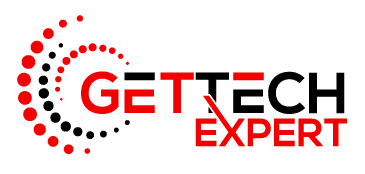Businesses are gradually waking up to the importance of robust data governance practices to truly leverage the benefits of big data. Aside from driving informed decision-making, implementing effective governance is also crucial for ensuring data quality and compliance.
If you are on the verge of implementing data governance, below are 5 key essentials you need:
1. Data Catalog: The Heart of Data Governance
A data catalog is a centralized repository that serves as the backbone of data governance. It functions as a comprehensive inventory of your organization’s data assets, providing metadata, lineage, and context about each dataset. Here’s why a data catalog is an essential component:
- Data Discovery and Accessibility: A data catalog enables users to discover and access relevant data quickly. It acts as a searchable directory, making it easy for analysts, data scientists, and other stakeholders to find the data they need, eliminating the time wasted on hunting down information.
- Data Lineage and Traceability: Understanding the lineage of data is critical for maintaining data quality and compliance. A data catalog helps track the origin and transformations of data, ensuring transparency and accountability in data processes.
- Data Governance Policies: The catalog also allows you to enforce data governance policies more effectively. With it, you can define data classifications, access controls, and data usage policies, making it clear how data should be handled and protected.
- Collaboration and Data Sharing: By allowing users to annotate and share insights about datasets, a data catalog promotes collaboration. This fosters a culture of knowledge sharing and helps teams leverage collective data expertise.
- Compliance and Auditing: When it comes to regulatory compliance, a data catalog can track data usage and access, making it easier to demonstrate compliance to auditors. It helps your business stay in line with data protection regulations such as GDPR, HIPAA, or CCPA.
2. Chief Data Officer (CDO): The Guardian of Data
The Chief Data Officer (CDO) basically helps in overseeing and driving data governance efforts. Here’s why a CDO is an essential piece of the data governance puzzle:
- Strategic Vision: A CDO provides strategic direction by aligning data governance initiatives with the organization’s overall goals. They ensure that data governance efforts contribute to improved business outcomes.
- Accountability: With a CDO in place, there’s clear accountability for data-related issues. They take responsibility for data quality, compliance, and data-driven decision-making, fostering a culture of data responsibility across the organization.
- Cross-functional Collaboration: A CDO bridges the gap between IT, data, and business functions. They facilitate collaboration, ensuring that data governance practices are embedded in various departments and that it is used effectively to meet business objectives.
- Risk Management: Let’s face it: data breaches and privacy concerns are real threats. A CDO can help here as they work to identify and mitigate risks by implementing robust data security measures, ensuring that sensitive data is protected.
3. Data Stewardship Program: Ensuring Data Ownership
Another essential component of a robust data governance strategy is a data stewardship program. This is essential for assigning ownership and responsibility for data assets. Data stewards are individuals within the organization who are accountable for the quality, integrity, and compliance of specific datasets. They play a crucial role in data governance by:
- Data Quality: Data stewards ensure that data is accurate, complete, and up-to-date. They monitor data quality metrics and take corrective actions when issues arise.
- Compliance: Stewards work closely with the CDO to implement and enforce data governance policies, ensuring that its usage adheres to regulatory requirements.
- Data Documentation: Stewards are responsible for maintaining metadata and documentation, making it easier for users to understand and use the data.
4. Data Governance Framework: Establishing Policies and Procedures
A well-defined framework outlines the policies, procedures, and standards that govern how data is managed within the organization. This framework is crucial for consistency and compliance. It should cover areas such as:
- Data Classification: Defining data sensitivity levels and access controls based on data classification.
- Data Lifecycle Management: Establishing processes for data creation, storage, archiving, and deletion.
- Data Security: Outlining security measures to protect data from breaches and unauthorized access.
- Data Privacy: Addressing privacy concerns and ensuring compliance with relevant data protection regulations.
- Data Change Management: Defining procedures for data changes, updates, and version control.
5. Data Governance Tools and Technology: Automation and Scalability
Finally, you cannot work with data effectively without the right tools and technology. These tools will help streamline and automate your governance processes. They can help with data cataloging, metadata management, data quality assessment, and compliance monitoring. Some popular tools include Collibra, Informatica, and Alation. Choosing the right tools ensures scalability and efficiency in your data governance efforts.
Data regulation is crucial, but it doesn’t come at no cost. You have to invest in these essential components to make sure you ideally leverage the benefits of data you’ve been striving to achieve.
If you invest in the right places, businesses can harness the power of their data while maintaining data quality, compliance, and transparency.



